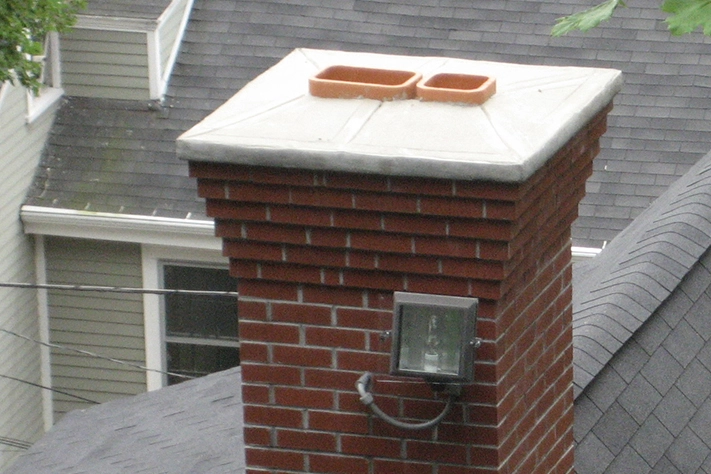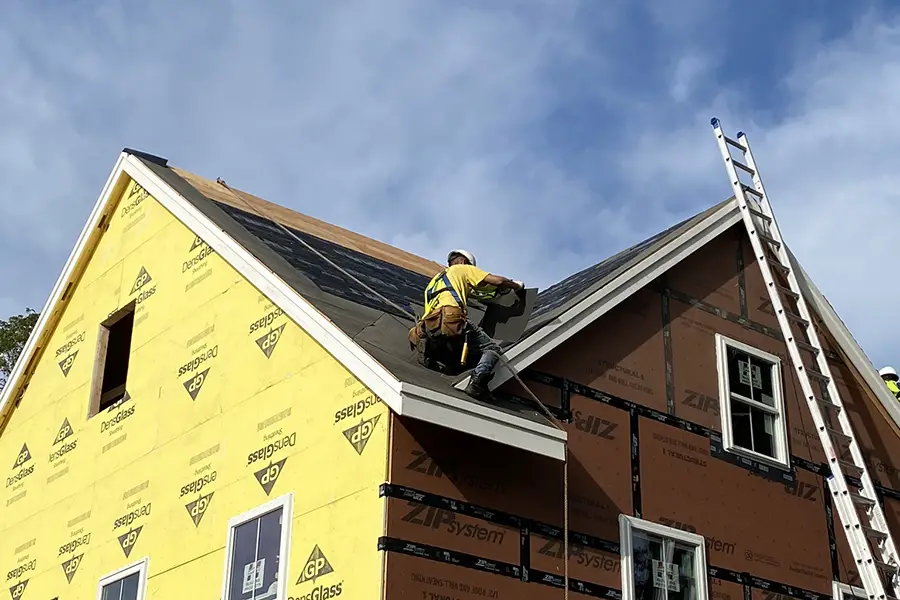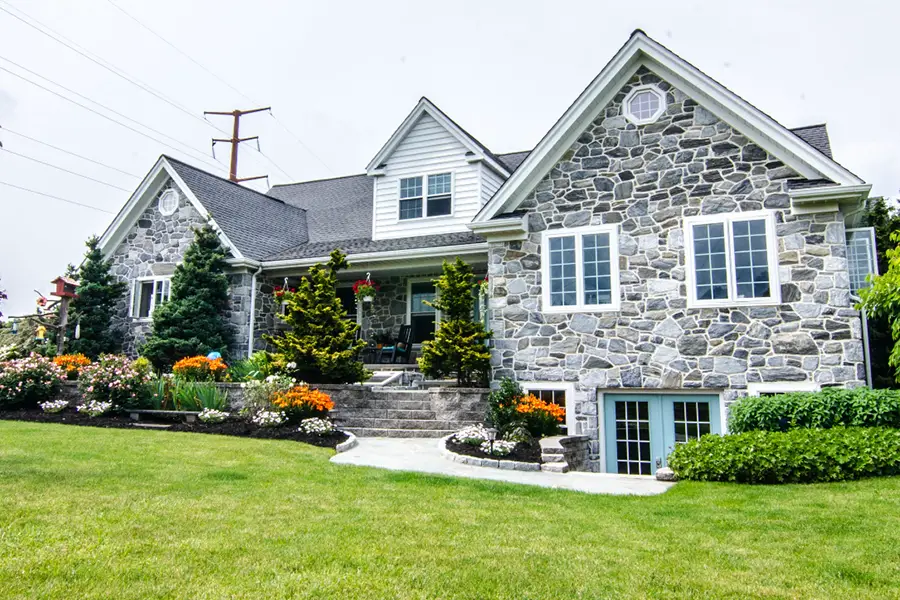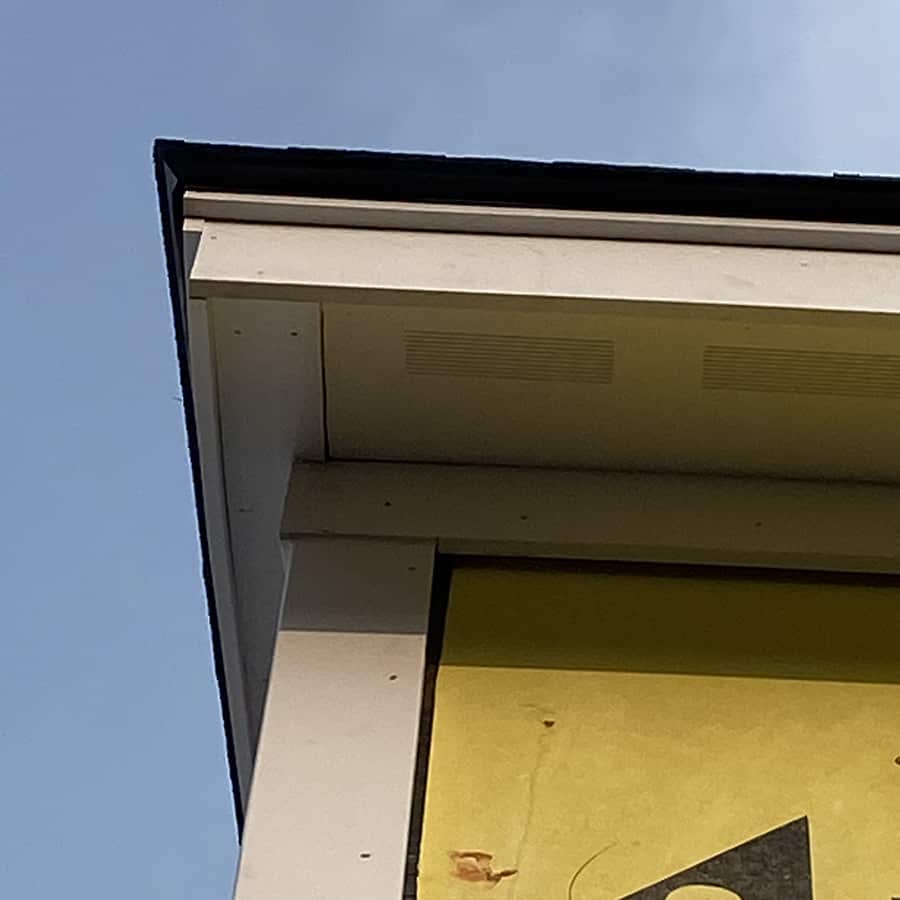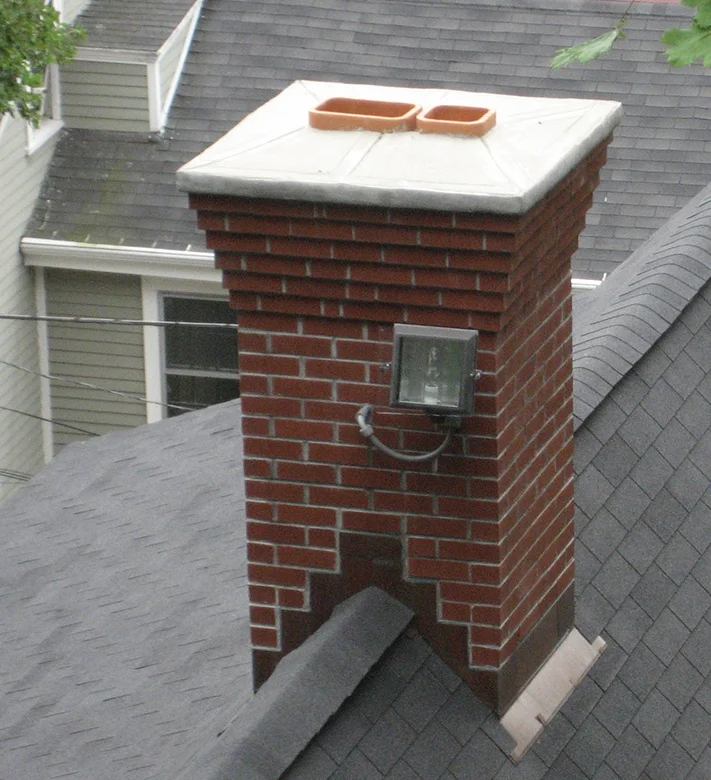
As we talk about in our article on Chimney Caps, while fireplaces are wonderful and inviting and may seem straightforward at first, a bit of chimney education is necessary if you’re a fireplace owner.
What is a chimney flue?
The chimney flue is the vertical passageway that transports waste gas outside of your home. As the warm air rises up and out through the flue, cool, fresh air enters the fireplace and passes through the fire, providing the necessary oxygen for combustion. Chimney flue liners provide a relatively seamless surface inside the chimney, offering insulation and preventing combustible materials inside the chimney from catching fire. Without a chimney flue liner, you run the risk of the not-so-charming byproducts of a fire- soot, fumes, and creosote- entering your home.

What are chimney flues made of?
- Clay Terra Cotta Tiles – Have been the standard for chimney flue liners for over a hundred years because they’re inexpensive, impervious to heat, and can last 50 years or longer with regular cleaning and care. They are best installed while the chimney is being built because the labor for retrofitting can be extremely time-consuming and therefore costly. This article’s main image shows the terracotta flue exiting the top of the chimney.
- Cast-in-place Poured Cement – A good insulator, so the temperature stays high in the flue, resulting in cleaner burning. This type of liner is resistant to the harmful effects from any type of fuel. It can be installed retroactively but should be done by a professional – this is not an entry-level DIY project! And like terra cotta, cement is known to last for decades.
- Stainless Steel – While quite expensive at around $100/ft for installation, stainless steel flue liners typically come with a lifetime warranty, making the price more palatable. They come in both flexible and rigid options, and since stainless is naturally resistant to corrosion and rust, is easier to clean and maintain. Finally, many say round flues are the most efficient because of the helical pattern smoke naturally makes as it spirals upwards and outwards.
What does the code say?
The 2018 IRC recommends that all masonry chimneys should be lined. Liners must be appropriate for the type of appliance connected, and following the manufacturer’s recommendation. If not clay or factory-built, a liner must be made of “approved materials that will resist corrosion, erosion, softening, or cracking from flue gases and condensate at temperatures up to 1800 degrees fahrenheit.”
Clay liners “shall…extend from a point not less than 8 inches below the lowest inlet…or from the top of the smoke chamber to a point above the enclosing walls. The lining must be vertical, with a maximum slope not greater than 30 degrees from the vertical.”
Can I reline or repair my existing liner?
If your liner has become damaged from years of use and the exposure to combustion gases, creating cracks in the tiles or erosion of the joints, it may be time to repair your chimney liner or potentially insert a new liner.
If you’ve recently had your chimney serviced by a technician and they suggest relining, ask to see live images of the damage from their inspection equipment. This will help clarify the extent of the issue and offer you a starting point for getting quotes to do the repair. For the safety of your home and your family, getting a new liner installed should be a priority before continuing to use the fireplace.
How to reline a chimney
When relining a chimney, there are multiple factors that can increase the price. Retrofitting is hard, especially if there are bends in the flue or older tiles need to be removed, so labor can be expensive.
Basically, there are three approaches to relining, but whatever avenue is chosen, the installer will first thoroughly clean and inspect the chimney, removing any damaged materials.
- Reconstruct the damaged clay liner with new clay tiles – Very labor intensive. This involves breaking through the chimney walls in various places in order to remove and replace the tiles.
- Reinforce the chimney and create a new flue with a poured-cement liner – Requires the use of either inflatable balloons strategically stacked to create a form, or by using a vibrating bell pulled slowly upwards through wet cement.
- Reline/repair the existing flue and add new metal flue liners – The only relining option that could conceivably be a DIY project. Complete kits are available from several manufacturers that include instructions and hardware, but it may be worth consulting with a professional first to ensure you’re getting the right package for your home.
The bottom line
Chimney Flue Liners are essential for the health and longevity of your fireplace system and your home. They minimize toxic gases from corroding your flue, and they encourage healthy and efficient airflow. Let us know in the comments if you have any other tips for other readers!

